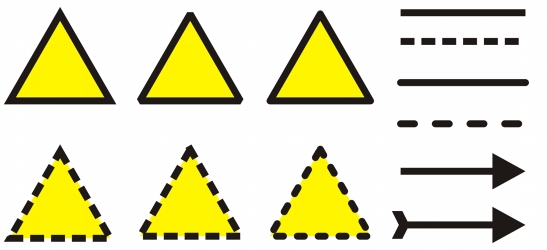Mastering Precision: A Comprehensive Guide to Specifying Line and Outline Settings in CorelDRAW

Introduction:
CorelDRAW, a leading vector graphics editor, empowers designers to create intricate and visually compelling artworks. Among its diverse features, the ability to specify line and outline settings stands out as a fundamental skill for achieving precision and control. In this extensive guide, we will delve into the intricacies of specifying line and outline settings in CorelDRAW, exploring various techniques, customization options, and advanced tips. Whether you’re refining illustrations, crafting detailed designs, or enhancing typography, mastering the art of line and outline settings elevates your creative possibilities within the dynamic world of CorelDRAW.
Understanding Line and Outline Settings in CorelDRAW:
Line and outline settings encompass a range of attributes that define the appearance and characteristics of strokes in vector graphics. These settings include parameters such as line thickness, color, style, and more. By specifying these settings, designers can achieve varied effects, add emphasis to certain elements, and tailor the visual presentation of their creations. CorelDRAW provides a rich set of tools and options to manipulate line and outline settings, offering both basic functionalities and advanced customization.
Basic Techniques for Specifying Line and Outline Settings:
- Accessing Object Properties: Begin by selecting the object or shape for which you want to specify line and outline settings. Use the Pick tool to click on the desired object, ensuring it is highlighted. Access the ‘Object Properties’ docker, typically found on the right side of the interface, to reveal a range of options related to the selected object.
- Outline or Pen Settings: Within the ‘Object Properties’ docker, locate the ‘Outline’ or ‘Pen’ settings. These settings determine the attributes of the outline or stroke of the selected object. Parameters such as color, thickness, style, and transparency can be adjusted from this section.
- Choosing Line Thickness: Adjust the thickness of the outline by selecting a predefined line thickness from the ‘Outline’ or ‘Pen’ settings. Alternatively, input a custom thickness value to achieve the desired visual impact. This is particularly useful for emphasizing or de-emphasizing specific elements in your design.
- Selecting Line Color: Choose the color of the outline by clicking on the color swatch within the ‘Outline’ or ‘Pen’ settings. CorelDRAW provides a comprehensive color picker, enabling users to select from a spectrum of colors or input specific color values.
Advanced Techniques for Fine-Tuning Line and Outline Settings:
- Customizing Line Styles: Beyond basic line thickness and color, CorelDRAW offers a variety of line styles to add visual interest. Experiment with dashed lines, dotted lines, or custom line styles by accessing the ‘Outline’ or ‘Pen’ settings and selecting the desired style.
- Transparency and Blending: Explore transparency options to create nuanced designs. Adjust the transparency of the outline by modifying the ‘Transparency’ slider within the ‘Outline’ or ‘Pen’ settings. Blending modes, accessible in the ‘Effects’ menu, provide additional possibilities for blending outlines with underlying elements.
- Custom Arrowheads and Endings: Enhance the visual appeal of lines by customizing arrowheads or line endings. Access the ‘Arrowheads’ or ‘Endings’ section within the ‘Outline’ or ‘Pen’ settings to choose from predefined options or create custom arrowheads for a personalized touch.
Customization Options for Precision:
- Fine-Tuning with the Shape Tool: After specifying line and outline settings, use the Shape tool to fine-tune individual nodes and segments. Click and drag nodes or segments to achieve pixel-perfect adjustments, enhancing precision in your design.
- Snapping Options for Alignment: Utilize snapping options to ensure accurate alignment of objects and lines. Enable ‘Snap to Grid,’ ‘Snap to Guidelines,’ or ‘Snap to Objects’ to facilitate precise placement and maintain consistency.
- Layer Management for Organization: Employ a strategic approach to layer management for efficient organization. Group related objects on separate layers, allowing for easy adjustment of line and outline settings across multiple elements.
Troubleshooting and Optimization Strategies:
- Object-Specific vs. Global Settings: Differentiate between object-specific and global settings. Object-specific changes, made through the ‘Object Properties’ docker, apply only to the selected object. Global changes, made through the ‘Edit’ menu or ‘Tools’ menu, can be applied to all objects in the document.
- Undo and Redo: If the result doesn’t align with your vision, utilize the ‘Undo’ command (Ctrl + Z) to revert the action. Conversely, use ‘Redo’ (Ctrl + Y) to reapply changes that were undone.
- Saving Style Presets: To streamline your workflow, save style presets for commonly used line and outline settings. This ensures consistency in your design and allows for quick application of predefined styles.
Conclusion:
Specifying line and outline settings in CorelDRAW is a fundamental skill that empowers designers to achieve precision and control in their digital creations. By exploring the various techniques, customization options, and advanced tips presented in this comprehensive guide, you’ll gain the confidence to manipulate line and outline settings with ease and finesse. Whether you’re crafting detailed illustrations, perfecting typography, or designing intricate elements, CorelDRAW provides a versatile platform to unleash your creativity within the dynamic world of vector graphics. Embrace the comprehensive tools that allow you to specify line and outline settings, and let your designs flourish on the digital canvas with precision and visual impact.




